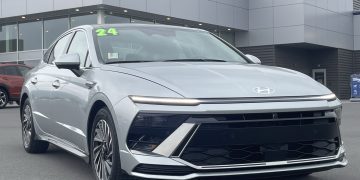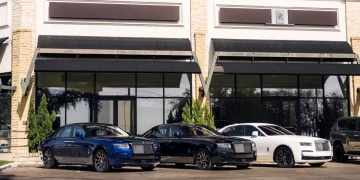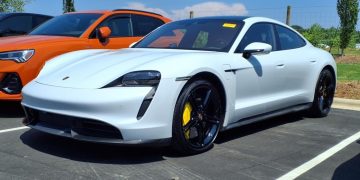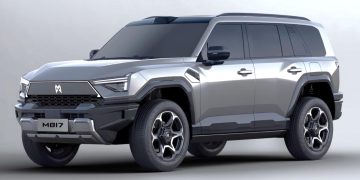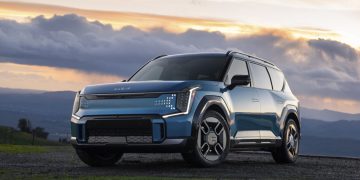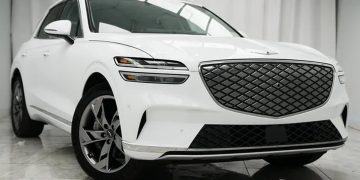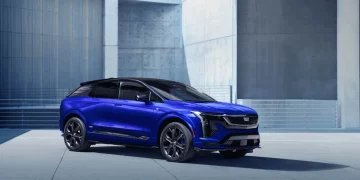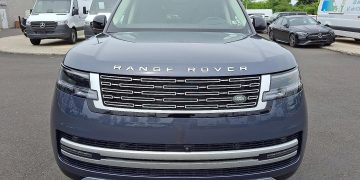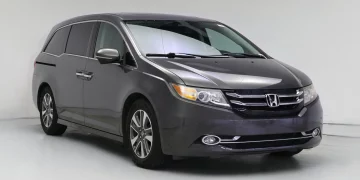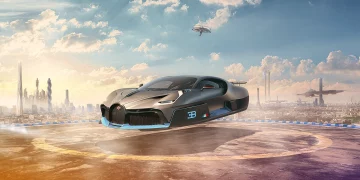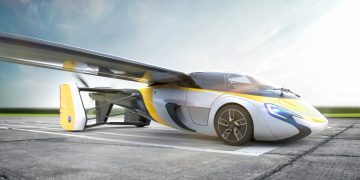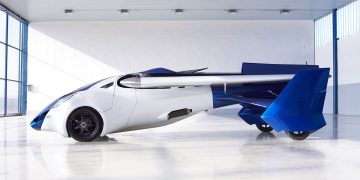The world is increasingly focused on sustainability, and industries across the globe are being pushed to adopt greener and more energy-efficient solutions. Vehicles, being one of the largest contributors to carbon emissions, play a crucial role in this transformation. Specialized vehicles, which are designed to meet specific operational needs in fields such as construction, transportation, and emergency services, are often seen as less adaptable to the shift toward environmental protection and energy efficiency. However, technological advancements and innovative designs suggest that specialized vehicles can and are making significant strides in reducing their environmental impact.
In this article, we will explore how specialized vehicles can achieve breakthroughs in environmental protection and energy efficiency, addressing the factors that enable such developments, the challenges involved, and the real-world examples of these advancements.
1. The Growing Demand for Eco-Friendly Specialized Vehicles
As governments and industries face growing pressure to reduce carbon emissions and adopt more sustainable practices, the focus has shifted toward integrating eco-friendly technologies into all forms of transport, including specialized vehicles. Industries that rely on specialized vehicles for operations, such as logistics, construction, emergency services, and public transportation, are not immune to this trend.
The transport sector remains one of the largest contributors to global CO2 emissions, making it critical for specialized vehicles to adopt more environmentally conscious practices. Here are a few key drivers for adopting environmentally friendly solutions in specialized vehicle design:
1.1 Government Regulations and Policies
Governments worldwide are introducing stringent regulations to reduce vehicle emissions and promote the use of green technologies. For instance, many cities and countries are implementing low-emission zones or setting carbon reduction goals for fleets. Specialized vehicles, such as garbage trucks or construction vehicles, need to comply with these regulations, motivating manufacturers to find solutions that reduce emissions and increase fuel efficiency.
- EU Regulations: In the European Union, there are specific regulations such as the Euro 6 standard, which sets limits on vehicle emissions of pollutants such as nitrogen oxide (NOx) and particulate matter. These standards directly impact the design and development of specialized vehicles.
- US Environmental Protection Agency (EPA): The EPA enforces regulations that mandate reduced emissions for commercial vehicles, encouraging manufacturers to develop cleaner, more efficient powertrains.
1.2 Rising Environmental Awareness
With growing consumer and public concern about the environmental impact of transportation, industries are increasingly opting for greener alternatives. Specialized vehicles, which are often in high-use sectors such as waste management, construction, and emergency services, have a significant environmental footprint. As industries recognize the importance of adopting sustainable practices, they are investing in vehicles that contribute to reducing their carbon footprint.
2. Technological Innovations Driving Eco-Friendly Specialized Vehicles
The integration of green technologies and alternative fuels is transforming specialized vehicles into more sustainable solutions. Several technological innovations are contributing to the eco-friendliness and energy efficiency of these vehicles, resulting in breakthroughs in both environmental protection and fuel savings.
2.1 Electric and Hybrid Powertrains
One of the most significant breakthroughs in specialized vehicle design is the development of electric and hybrid powertrains. These vehicles use electric motors or a combination of internal combustion engines (ICE) and electric motors to reduce fuel consumption and emissions.
- Electric Garbage Trucks: Many cities around the world have started using electric waste collection trucks, which run entirely on electricity. These vehicles eliminate the need for diesel fuel, reducing emissions significantly. Companies such as Rivian and BYD have developed electric versions of these specialized vehicles, which offer reduced noise pollution, lower emissions, and lower operating costs.
- Electric Construction Vehicles: The construction industry, known for its large, diesel-powered machinery, is also witnessing a shift toward electric-powered machinery. Electric bulldozers, excavators, and other heavy-duty equipment are increasingly used on construction sites. These vehicles are not only quieter and cleaner but also reduce operating costs significantly in terms of fuel and maintenance.
- Hybrid Fire Trucks: Fire departments are adopting hybrid fire trucks that combine an electric motor with a traditional diesel engine. These trucks can operate on electric power when in idle or low-load situations, improving fuel efficiency and reducing emissions during non-emergency use.
2.2 Hydrogen Fuel Cell Vehicles
Hydrogen fuel cells are gaining traction as an alternative to traditional internal combustion engines. Specialized vehicles, such as long-haul trucks or buses, that require significant power and range are increasingly exploring hydrogen as a viable fuel option.
- Hydrogen-Powered Delivery Trucks: Companies like Nikola Motor and Toyota are developing hydrogen-powered trucks that offer long range and fast refueling compared to electric vehicles. This technology is particularly beneficial for industries that require heavy-duty hauling over long distances, such as logistics or construction, while still offering a cleaner alternative to diesel trucks.
- Hydrogen-Powered Buses: In urban transportation, hydrogen-powered buses are being introduced as a clean alternative to diesel-powered buses. These vehicles offer zero emissions, making them an ideal solution for public transit fleets in cities that aim to reduce air pollution.
2.3 Autonomous Vehicles for Efficiency
Autonomous or self-driving vehicles have the potential to dramatically increase the fuel efficiency and operational efficiency of specialized vehicles. By utilizing advanced sensors, AI-driven systems, and real-time data analysis, autonomous vehicles can operate in a way that maximizes fuel efficiency.
- Optimized Routes and Operation: Autonomous waste collection vehicles, for example, can follow optimized routes to reduce fuel consumption. These vehicles can also adjust their speed and braking patterns for maximum energy efficiency.
- Smarter Fleet Management: In logistics, autonomous trucks can improve fleet management by ensuring that vehicles operate at optimal speeds and load capacities, reducing fuel waste and improving overall operational efficiency.

3. Challenges to Overcome in Achieving Breakthroughs
While the potential for specialized vehicles to become more environmentally friendly and energy-efficient is significant, several challenges remain that manufacturers and industries must overcome to achieve true breakthroughs.
3.1 High Initial Investment
One of the primary barriers to adopting environmentally friendly specialized vehicles is the high initial cost. Electric, hybrid, or hydrogen-powered vehicles often come with a higher purchase price compared to traditional diesel-powered vehicles due to the cost of batteries, fuel cells, and advanced technologies.
- Cost-Benefit Considerations: While these vehicles offer long-term operational savings (e.g., lower fuel costs and maintenance), the upfront investment can be daunting for companies, particularly small businesses that rely heavily on specialized vehicles for daily operations.
- Incentives and Subsidies: To mitigate these costs, many governments offer tax credits, subsidies, or incentive programs to encourage the adoption of eco-friendly vehicles. However, the availability of these incentives can vary by region and industry, creating inconsistencies in adoption rates.
3.2 Limited Charging and Refueling Infrastructure
For electric and hydrogen-powered vehicles, the lack of widespread infrastructure for charging stations or hydrogen refueling can be a significant hurdle. Specialized vehicles, particularly those operating in remote or industrial areas, may not have easy access to refueling stations, limiting the practicality of these green solutions.
- Electrification of Remote Areas: While major cities are investing in charging infrastructure, remote industrial areas or construction sites may not have the necessary facilities to charge or refuel these vehicles. Expanding infrastructure to meet these needs is essential for making electric and hydrogen vehicles viable for specialized applications.
3.3 Range Limitations
Although the range of electric vehicles has significantly improved in recent years, range anxiety remains a challenge for specialized vehicles, particularly those used in industries like logistics, emergency services, and construction.
- Long-Range Hauling: For long-haul delivery trucks or large construction machinery, electric or hydrogen-powered vehicles may not yet provide the same range as their traditional counterparts. This limitation can restrict their use in certain operations, particularly those that require traveling long distances without frequent refueling.
3.4 Technology and Market Maturity
While the development of electric, hybrid, and hydrogen-powered specialized vehicles is promising, these technologies are still maturing. In some cases, the performance and cost-effectiveness of these vehicles may not yet meet the high standards required for heavy-duty tasks.
- Development of More Efficient Powertrains: Advances in battery technology (such as solid-state batteries) or more efficient hydrogen fuel cells could eventually overcome some of these limitations, but this will take time and significant investment in research and development.
4. Conclusion
Specialized vehicles can undoubtedly achieve significant breakthroughs in environmental protection and energy efficiency, but their full potential depends on overcoming several technological, financial, and infrastructure challenges. The rise of electric, hybrid, and hydrogen-powered vehicles represents a significant leap forward in the effort to reduce the environmental impact of industries that rely on specialized transport.
As governments continue to introduce eco-friendly regulations, and as technology advances, the adoption of green specialized vehicles is expected to grow, offering businesses both cost savings and enhanced sustainability. Despite the hurdles, the future of specialized vehicles lies in innovation—from cleaner powertrains to smarter fleet management systems—and with continued investment in research and infrastructure, these vehicles can become a cornerstone in the effort to build a more sustainable, eco-friendly world.

